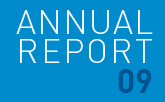As the months of the first quarter passed by, the contraction in gas demand was confirmed: in February there was a drop of 7.7% across the countries of the OECD as a whole. The figures for the first half of 2009 indicated a decline in demand in the OECD of 6.5%. By September the cumulative figure had moderated: the decline stood at 4.8%.
At the 24th World Gas Conference, certain speakers did note signs of recovery around that time, mainly based on scenarios which should serve to instigate the onset of a phase of expansion. These circumstances were the fall in gas prices in the marketplace and the decline in the cost of raw materials used for gas infrastructure.
The evolution of prices on the main short and medium-term exchange markets revealed a considerable decline, with low figures being maintained for much of 2009. The Henry Hub, for example, stood at $3.74/MMBtu in June 2009. One year earlier the figure had been $12.59/MMBtu.
This situation was worsened by the increase in the output of non-conventional gas in the United States, thereby increasing the availability of conventional gas on the market, and further pushing gas prices downwards.
In terms of prices, one of the key features of 2009 was the decoupling of the price of natural gas from the price of crude on the short-term and spot market in the USA and Europe.
As a result there was meanwhile an increase in interest in the creation of more subterranean storage, with a Cedigaz report published in October 2009 indicating that 109 storage facilities were at the planning phase, operational by 2015, with a 24% increase in current capacity.
The strengthening of cross-border routes (including Hispano-French connections) was another of the approaches supported by the European Commission.



